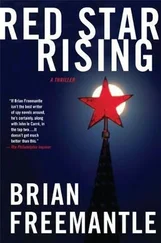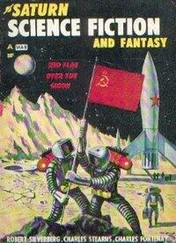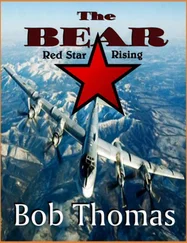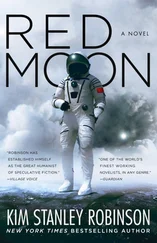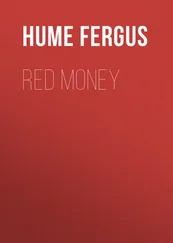Today, though, was a special outing for Sergei. Ever since the ZIS had picked him up outside class at the Moscow Institute of Power Engineering that morning, he had been giddy with anticipation. “You see, I was studying to become a rocket scientist, a guidance systems expert to be precise,” he noted. And today his father was taking him to NII-88, the USSR’s top-secret rocket research facility.
• • •
The design bureaus of NII-88 were discreetly tucked away outside Moscow, where too many foreigners with prying eyes roamed the streets. To get there, then as today, visitors took the main road to Yaroslavl. Khrushchev’s motorcade, with the other Presidium members in tow, turned onto what is now called the M8 highway, and the cranes and suburban construction sites soon gave way to the countryside. The transition came abruptly, like crossing some imaginary threshold between the twentieth and eighteenth centuries. Roads turned to mud, settlements into ramshackle villages. Wooden farmhouses and huts with thatched roofs leaned at crazy angles. Most had no electricity or running water. Their inhabitants had few teeth. They walked around half dazed, as if in slow motion, swaddled in rags, filthy peacoats, and sleeveless jackets made from the hides of farm animals. The herds of cattle were scrawny and clumped with manure. Skinny chickens scampered underfoot.
Though the Communist Party viewed the backward peasants with undisguised contempt for both ideological and practical reasons (stemming from perennially poor harvests), Khrushchev had always felt comfortable in the countryside. He had made agriculture his bailiwick under Stalin, and he had grown up in similar circumstances, tending sheep as a young boy in the tiny farming community of Kalinovka, near Kursk. “Every villager dreamed of owning a pair of boots,” he recalled. “We children were lucky if we had a decent pair of shoes. We wiped our noses on our sleeves and kept our trousers up with a piece of string.”
But the massive farms that the Presidium held in such low regard played another critical role besides putting food on Soviet tables. The endless expanses they covered provided Russia with its main line of defense. It was these snow-covered fields, stretching thousands of miles, that had defeated Hitler and Napoleon. Like frozen deserts that thawed into impassable bogs, they had protected Moscow from all its Western enemies. Armies could advance over the plains, but invariably their supply lines would grow thin, the winter would set in, and rural Russia would ravage the invaders. The steppe had always afforded Moscow the ultimate victory. Until now. Now, in the nuclear and jet age, distance and climate no longer provided a natural limit to foreign depredations. And to Khrushchev, that seemed precisely what the latest U.S. military doctrine aimed to do.
Khrushchev was unsettled by the rise to power of the Republican Party, after more than two decades of Democratic rule. The Republicans represented the American capitalist class, and their electoral battle cry had been hard-line anticommunism. To the Soviets, the emergence of the rich, Russophobe Republicans signaled the arrival of a more combative and ideological adversary in Washington, personified by John Foster Dulles, the dour and deeply religious secretary of state, a man who dressed and talked like a clergyman and yet managed to make millions during the Great Depression. The USSR, Dulles declared, could never be appeased, because “the Soviets sought not a place in the sun, but the sun itself.” His opinion was codified by the National Intelligence Estimate of September 15, 1954, which stated, “Soviet leaders probably envision: (a) the elimination of every world power center capable of competing with the USSR; (b) the spread of communism to all parts of the world; and (c) Soviet domination over all other communist regimes.”
With growing alarm, the Soviets watched as Dulles purged the State Department of suspected liberals. Veteran foreign service officers who had accurately predicted Communist gains in Asia were sacked for not displaying “positive loyalty,” while foreign allies were warned that they too had better toe the new hard line or be faced with an “agonizing reappraisal” of U.S. assistance. Dulles’s playboy brother Allen, whose hedonism was matched only by his hatred of communism, was put in charge of the Central Intelligence Agency, which rapidly ballooned from an obscure bureaucratic outpost with 350 employees to an aggressive frontline agency with thousands of operatives intent on undermining Soviet power.
John Foster Dulles lurked dangerously behind the kind, grandfatherly facade of President Dwight D. Eisenhower, whom the Soviets knew to be ill with a heart condition and increasingly detached from day-to-day affairs of state. It was the unelected and standoffish lawyer, not the popular war hero, who thus dictated U.S. policy. America’s moral duty, Dulles declared, was not merely to stop the spread of communism but to “liberate captive peoples” all over the world. The Eisenhower administration, Dulles pledged, would “roll back” Communist advances in Europe and Asia and send the Soviets packing. What’s more, he continued, the United States would no longer bother with small local conflicts like Korea to keep communism in check. Henceforth it would prepare for “total war,” a phrase coined by Admiral Arthur Radford, the chairman of the Joint Chiefs of Staff, and wage an “instant, tremendous, and devastating” nuclear attack on the Soviet Union itself. Only a doctrine of “massive retaliation” promised “to create sufficient fear in the enemy to deter aggression.” The strategy, Dulles noted, “will depend primarily on a great capacity to retaliate instantly by means and at places of our choosing.”
To the stunned Soviets, who did not yet have the effective capacity to launch any sort of surprise attack on the United States (as Dulles well knew), the massive retaliation doctrine was perceived as little more than a massive intimidation tactic. “We shall never be the aggressor,” Eisenhower had reassured the Russians at a summit meeting in Geneva in 1955, but Khrushchev had no guarantees of that. The only way for Khrushchev to guarantee Soviet security was to develop his own massive retaliation capabilities. But he lagged far behind his American rivals.
Nuclear weapons production in America had been ramped up to an industrial, assembly-line scale under the Eisenhower administration. By 1955 the United States had amassed 2,280 atomic and thermonuclear bombs, a tenfold increase from 1951, representing an arsenal nearly twenty times greater than the Soviet stockpile. (As Dulles’s doctrine evolved, the number of warheads would jump to 3,500 by late 1957, double to 7,000 by 1959, hit 12,305 by 1961, and top 23,000 two years later.) Meanwhile, billions of dollars were being poured into an armada of heavy long-range bombers to deliver the nuclear payloads. By 1956 the air force bomber fleet had almost doubled in size, and the Strategic Air Command kept a third of its 1,200 B-47 long-range bombers on the runway at all times, fueled and loaded with their nuclear cargo. Curtis LeMay, the cigar-chomping SAC commander, seemed to be on a personal mission to instill fear in Russian hearts. In January 1956, LeMay scrambled almost all his bombers in a simulated nuclear attack. In another exercise, Operation Powerhouse, his planes flew nearly one thousand simultaneous sorties from more than thirty bases around the world to intimidate Moscow. In a few weeks, he would launch yet another exercise called Operation Home Run—reconnaissance versions of his B-47 Stratojets would fly from Thule, Greenland, over the North Pole, and into Siberia to probe for gaps in Soviet radar defenses. The mission would culminate with a squadron of the metallic silver RB-47s, their undersides painted white to reflect the flash of a nuclear blast, flying in attack formation in broad daylight several hundred miles into Soviet territory. The Soviets would have no way of knowing that the bombers were not armed, or that an attack was not imminent. And that would be the point of the exercise: to expose the USSR’s defenselessness against a polar attack and to drive home the message that the United States could strike Russia at will. “With a bit of luck, we could have started World War III,” LeMay would later reminisce ruefully.
Читать дальше



